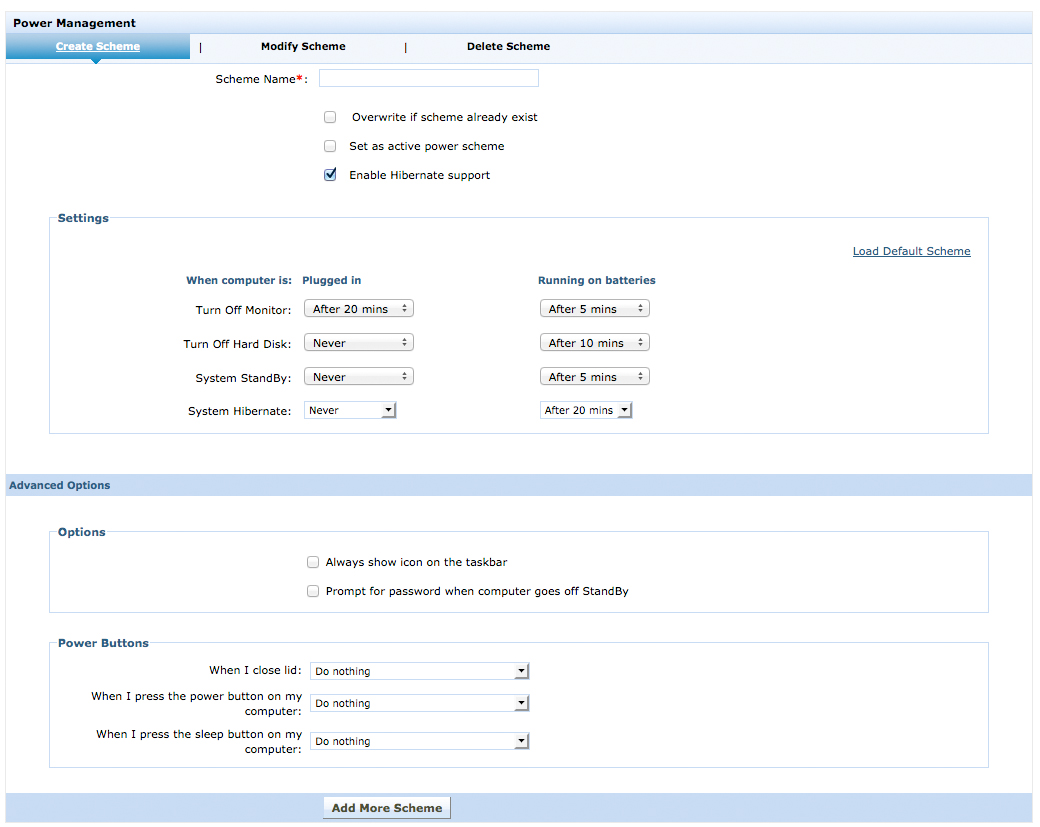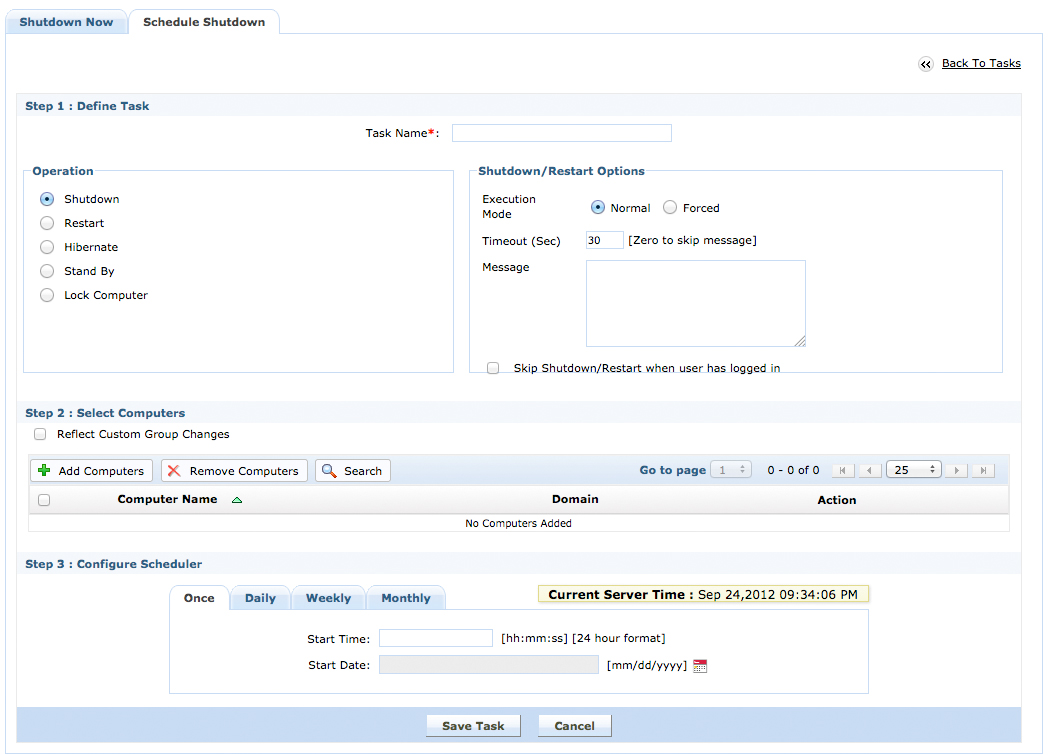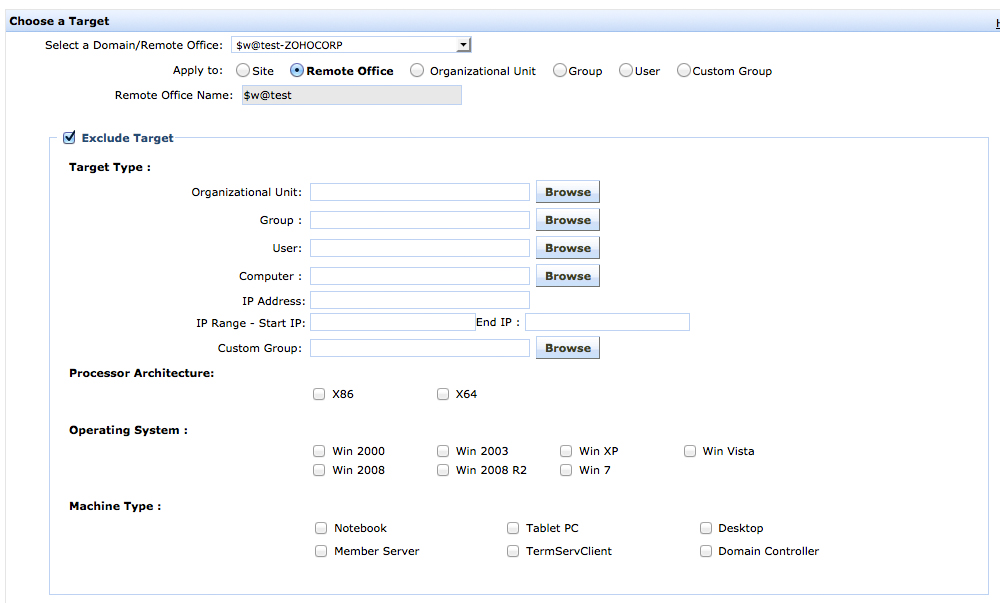Green Computing refers to the efficient use of computer resources. Some of the green computing practices include, Server Virtualization, Power Management, Secured Network to reduce eWaste, Using Recycled Materials, and so on. Though the ultimate goal is to save the planet and the resources for our future generations, let us limit ourselves with the Power Management here.
The launch of the Energy Star program back in 1992 was one of the first manifestations of the green computing movement. Started by the US Environmental Protection Agency, it served as a kind of voluntary label awarded to the products that minimizes the power usage. Energy Star applied to Computer Monitors, Television Sets, Air Conditioners, Refrigerators, etc.

A typical desktop computer comprises of CPU and a monitor. A computer running Intel P4, 2.4 GHz processor consumes 64.6 Watt per hour. Add another 50-100 Watt for the monitor. While the CPU consumes much litter energy when idle, the monitors on the other hand consume the same energy even when the computer is idle.
Let us do the math to calculate the average power consumption of a computer:
This is just for a single computer. As the number of computers increases, the saving on the electricity cost is huge. Just to give an example, for 2000 computers, the annual saving is $22,800.
Also, EPA estimates that the computers are active only 58% of time during working hours. The rest are used in non-computer activities such as phone calls, meetings, lunch, and refreshments. This idle time can be used to save additional power by adopting stringent power schemes to desktops.
Some of the power management techniques that enterprises can adopt are:
Desktop Central helps to standardize the power settings in all the computers of the network at once. It provides the following power saving options:
The Power Management Configuration in Desktop Central allows you to create multiple power schemes that can be deployed to multiple computers. The advanced options allows you to specify what has to be done when the laptop is closed or when the power button is pressed.

The screensavers were originally designed to save the CRT monitors from getting damaged by automatically changing the images on the screen during periods of user inactivity. With the advent of LCD monitors and technology improvements in mordern CRT monitors, screensavers are no longer required to protect monitors from phosphor burn-in. A graphically more intensive screensaver will require more power than the normal screen. While turing off the monitor from the power schemes will help you save power irrespective of whether screesaver is enabled or not, you can use the Desktop Central Registry Configuration to turn off the screensavers in older models that do not support power schemes.

Considering a normal working hours of 40 hrs/week, shutting down the computers during non-office hours will alone let you save a whooping 76% on your energy consumption. Desktop Central allows you to schedule remote shutdown tasks that can be scheduled to run on all weekdays. This helps you to shutdown all the computers during non-working hours. You can create multiple tasks to shutdown groups of computers at different times based on the employee working hours.

Desktop Central gives you a complete control on the target computers to which the configuration has to be deployed. You can create a custom group of users/computers and apply different power schemes. You can also exclude certain computers based on their OS and types from the selected targets.

Whether the intentions are to save the planet or money, enterprises that adopt these energy saving techniques will be benefited. Desktop Central in addition to Power Management offers various features like Software Deployment, Asset Management, Patch Management, Remote Control, Active Directory Reports, User Logon Reports, and Windows System Tools.